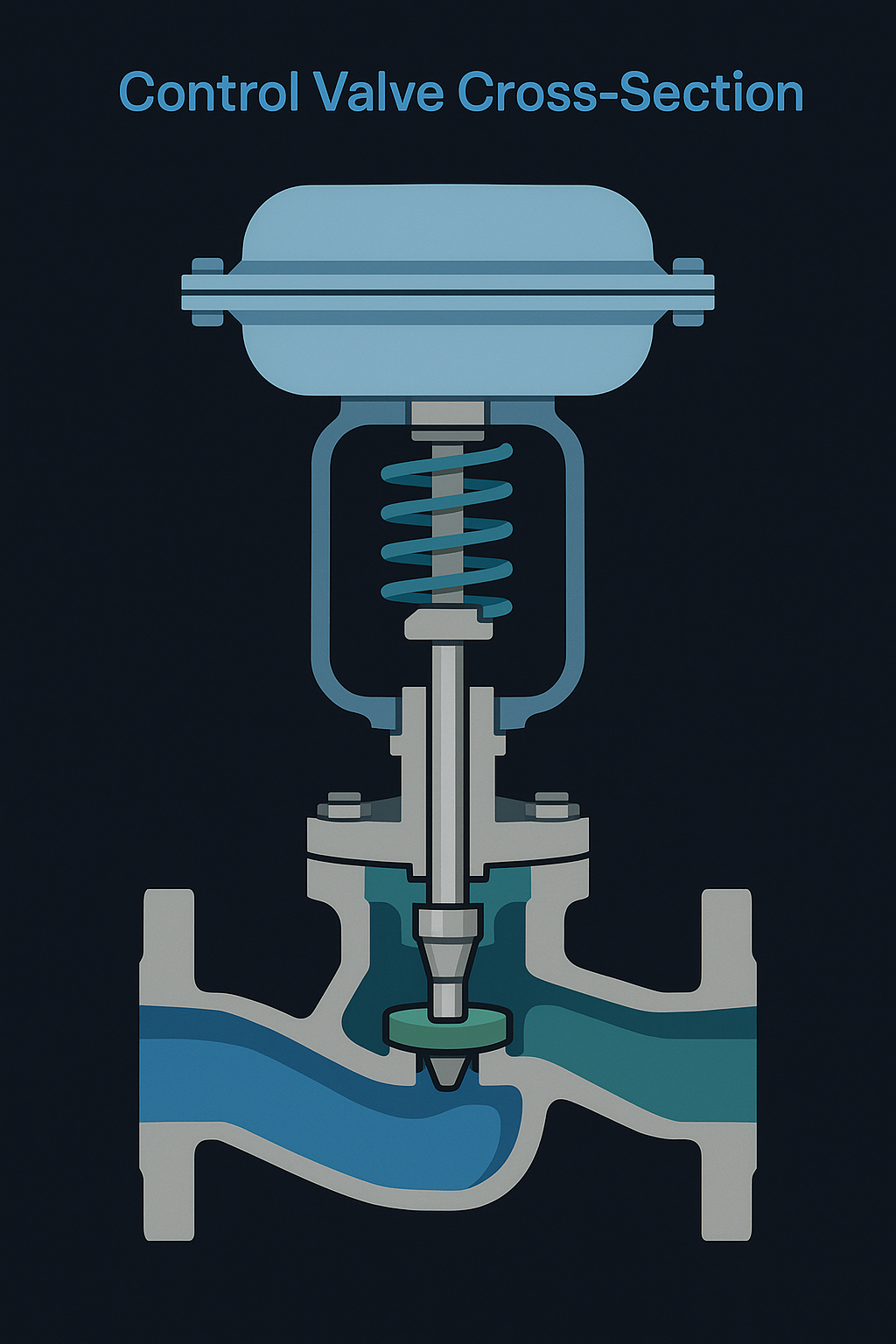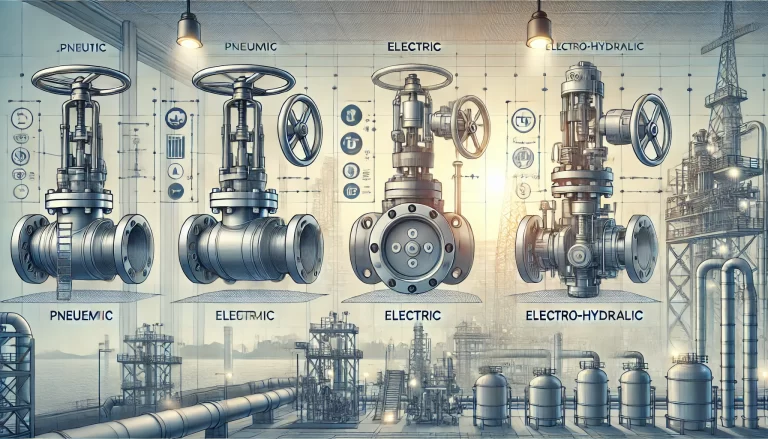Introduction
Pneumatic control valves play a crucial role in regulating process flow in industrial automation systems. However, due to complex operating environments and mechanical-electrical-pneumatic interactions, various faults may occur. This guide summarizes four common categories of failure, their causes, and practical troubleshooting methods.
1. Valve Fails to Actuate
Typical Symptoms: Valve does not respond to control signals.
Possible Causes:
Inadequate or interrupted air supply.
No output from I/P converter or positioner.
Diaphragm rupture inside actuator.
Sticking between valve plug and seat.
Troubleshooting Steps:
Air Supply Check
Ensure inlet pressure meets valve requirements (typically 0.4–0.6 MPa); inspect for blockage or leakage.Signal & Positioner
Measure input signal (e.g. 4–20 mA). If positioner has no output, recalibrate or replace it.Actuator Diaphragm
Dismantle actuator and inspect diaphragm. Replace if ruptured or aged.Valve Plug & Seat
Close inlet/outlet block valves, disassemble the trim, clean debris, and polish seating surfaces if needed.

2. Unstable Operation (Oscillation, Stick-Slip)
Typical Symptoms: Valve vibrates, responds sluggishly, or overshoots.
Possible Causes:
Fluctuating air pressure.
Improper positioner gain or tuning.
Poor lubrication between stem and guide bushing.
Foreign particles stuck in valve body.
Troubleshooting Steps:
Stabilize Air Pressure
Install a precision air regulator before the valve.Retune Positioner
Lower gain or adjust PID parameters to avoid hunting or overshoot.Lubricate Guide
Apply silicone-based grease to valve stem and bushing.Clean Internals
Flush valve body and install upstream filter if particles are frequent.

3. Leakage (Internal / External)
3.1 Internal Leakage
Symptoms: Valve is fully closed, but medium still flows.
Causes:
Damaged or worn sealing surface (plug/seat).
Dirt or debris on sealing surface.
Positioner zero offset – valve not fully closed.
Solutions:
Grind or replace trim: Restore plug/seat sealing surface.
Clean sealing areas: Remove any debris or scale.
Re-zero positioner: Ensure actuator delivers enough closing force.
3.2 External Leakage
Symptoms: Medium leaks from valve stem or flange.
Causes:
Packing material degraded or worn out.
Loose gland bolts.
Damaged flange gasket.
Solutions:
Replace packing: Use proper graphite or PTFE packing and compress layer-by-layer.
Tighten bolts: Evenly torque gland bolts to prevent misalignment.
Change gasket: Replace damaged gasket and retighten flange bolts using cross-tightening method.

4. Poor Control Accuracy
Symptoms: Valve cannot hold setpoint; process value fluctuates.
Possible Causes:
Inaccurate or degraded positioner.
Plug wear changes flow characteristics.
Damper failure (if equipped).
Signal interference (EMC issue).
Troubleshooting Steps:
Upgrade Positioner
Use high-accuracy smart positioner; recalibrate.Inspect Trim Wear
Replace plug if wear affects flow coefficient.Damper Check
Refill damping oil or replace damper assembly.Shield Signal Cable
Ensure twisted-pair shielded cables are grounded to reduce EMI.
Preventive Recommendations
| Inspection Item | Frequency | Action |
|---|---|---|
| Air supply pressure | Weekly | Check regulator stability |
| Positioner calibration | Monthly | Test signal response |
| Stem lubrication | Quarterly | Reapply approved grease |
| Packing tightness | Quarterly | Inspect for leaks and re-torque if needed |
| Gasket condition | Shutdown basis | Replace during major overhauls |

Conclusion
Effective maintenance and quick diagnosis of pneumatic control valve issues can significantly improve process stability and reduce downtime. By following the above troubleshooting steps and preventive measures, maintenance personnel can address most operational faults in a timely manner.
